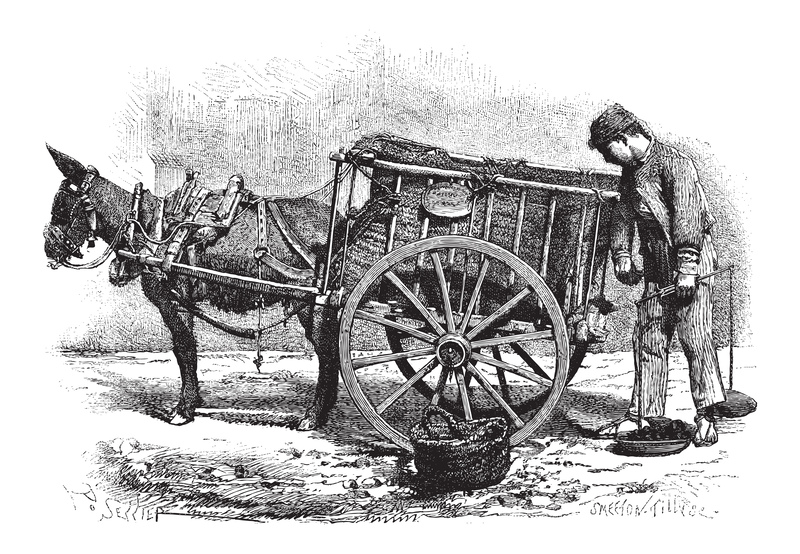Reducing Environmental Impact by Proper PPE Waste Disposal
In the wake of increased PPE (Personal Protective Equipment) usage worldwide, a pressing challenge has emerged: minimizing the environmental impact associated with PPE waste. From disposable masks and gloves to face shields and gowns, billions of PPE items are being discarded daily, raising concerns for both environmental health and human safety. This article explores the significance of proper PPE waste disposal, practical strategies for reducing ecological footprints, and how individuals and organizations can contribute towards a greener planet.

Understanding PPE Waste and Its Environmental Consequences
What Constitutes Personal Protective Equipment (PPE) Waste?
Personal Protective Equipment includes items specifically designed to safeguard the wearer from physical, chemical, and biological hazards. Current times, especially the COVID-19 pandemic, have seen an unprecedented surge in the global manufacture and use of disposable PPE. Common examples include:
- Single-use face masks
- Gloves (latex, nitrile, vinyl)
- Protective gowns and aprons
- Eye protection and face shields
- Head and shoe covers
While essential for health and safety, these items are largely composed of synthetic, non-biodegradable materials such as polypropylene and polyethylene. When not disposed of correctly, they often accumulate in landfills or - worse - end up polluting land, rivers, and oceans.
The Environmental Impact of Improper PPE Disposal
Improper PPE waste handling can have dire environmental implications:
- Marine Pollution: Discarded masks and gloves can break down into microplastics, which are ingested by marine creatures, disrupting the food chain.
- Wildlife Hazards: Animals may become entangled in PPE or mistake it for food, resulting in injury or death.
- Landfill Accumulation: Non-biodegradable PPE persists for decades, occupying valuable landfill space and leaching potentially toxic substances.
- Incineration Emissions: Inappropriate burning of PPE generates harmful gases, including dioxins and furans, posing risks to air quality and human health.
These issues highlight the urgent need for effective PPE waste management to prevent environmental damage and support public health.
Best Practices for Responsible PPE Waste Disposal
Guidelines for Individuals: How to Dispose of PPE Properly
Every individual has a role in reducing the ecological impact of PPE waste. Here are key recommendations for safe and environmentally friendly PPE disposal:
- Do not litter: Always place used PPE in designated waste bins. Littering PPE increases the risk of environmental contamination and public health issues.
- Seal waste securely: Contain used PPE - particularly if it might be contaminated - in plastic bags before placing it in household or public waste bins.
- Avoid flushing PPE: Items such as masks and gloves should never be flushed down toilets as they can cause sewer blockages and pollute waterways.
- Special disposal for contaminated PPE: If PPE has been in contact with infectious material, follow local medical waste disposal guidelines or contact relevant authorities for instructions.
- Seek recycling options: Where facilities exist, choose PPE items that are recyclable and ensure they are disposed of through appropriate recycling channels.
Note: Most single-use medical PPE cannot be recycled through regular household recycling streams. Always verify with your local waste management provider.
Strategies for Organizations: Managing Bulk PPE Waste
Businesses, hospitals, and institutions generate PPE waste at a much larger scale. Implementing these best practices can minimize environmental harm:
- Designated collection points: Install clearly marked PPE disposal bins in prominent and at-risk areas.
- Employee training: Educate staff on correct PPE disposal procedures and the environmental implications of non-compliance.
- Work with licensed operators: Partner with certified medical and hazardous waste contractors for collection and treatment of potentially infectious PPE.
- Monitor and report: Track the volume and type of PPE waste generated, setting reduction goals and reporting progress.
- Promote reusable PPE: Where appropriate, transition towards washable, reusable PPE to cut down on single-use waste.
PPE Waste Treatment and Recycling Innovations
Emerging Technologies in PPE Waste Processing
As the world grapples with mounting PPE waste, scientists and innovators are developing novel solutions for more sustainable disposal:
- Chemical recycling: Advanced processes can break down plastics in PPE into their monomer building blocks for reuse in the production of new materials.
- Mechanical recycling: Select PPE items, if uncontaminated, may be shredded and repurposed into construction materials or textiles.
- Thermal treatments: Safe incineration using modern technology can convert PPE waste to energy with minimal emissions.
- Biodegradable alternatives: Research is ongoing into PPE made from plant-based bioplastics that degrade harmlessly post-use.
While these technologies show promise, widespread implementation depends on regulatory approval, economic feasibility, and the development of reliable collection and sorting systems.
Government Regulation and Policy on PPE Waste Management
Global Standards for Safe PPE Disposal
Governments and health authorities have a critical role in establishing clear frameworks and policies for responsible PPE waste management. Approaches may include:
- Mandatory separation of PPE waste streams -- particularly for hazardous or contaminated materials.
- Strict rules on incineration to ensure harmful emissions are minimized.
- Public awareness campaigns to inform citizens about the dangers of PPE littering and the correct methods of disposal.
- Support for innovation in recycling and biodegradable PPE production through grants and incentives.
Unlike regular household rubbish, improper PPE disposal can jeopardize not only the environment but also sanitation workers and communities. Adhering to the latest regulations is therefore essential for all stakeholders.
Reducing PPE Waste at the Source
Alternatives to Single-Use PPE
While proper disposal is vital, the most effective way to lower PPE waste generation is to reduce reliance on single-use products wherever safe and practical. Consider these alternatives:
- Reusable cloth masks: For the general population, high-quality, washable fabric masks are an eco-friendly option when medical-grade PPE is unnecessary.
- Durable face shields and goggles: These can be sanitized and used repeatedly in multiple settings.
- Proper cleaning protocols: Ensuring reusable items are sanitized effectively prevents disease transmission and extends PPE lifespan.
- Biodegradable gloves: Some manufacturers now offer gloves made from compostable natural rubber latex or other sustainable materials.
A shift towards sustainable PPE use not only conserves resources but also slashes waste management costs and environmental threats over the long term.

Educating and Engaging the Public: The Path Forward
The Importance of Community Action in Reducing PPE Pollution
Widespread change will not happen without community involvement. Here's how local action can make a difference:
- Host clean-up drives: Organize local events to remove littered PPE from streets, parks, and waterways.
- Advocate for better bins: Request more public PPE disposal stations in areas with high foot traffic.
- Inform others: Share facts and tips about proper PPE disposal on social media and through community networks.
- Support eco-friendly brands: Choose companies committed to sustainable PPE design and responsible end-of-life disposal.
Education is key: By raising awareness, communities can help curb irresponsible disposal and foster a culture of environmental responsibility.
Conclusion: Building a Sustainable PPE Waste Management System
The global surge in PPE usage highlights an urgent environmental challenge: how to manage and minimize PPE waste responsibly. From individuals properly disposing of masks and gloves to large organizations developing robust collection and treatment practices, every action counts towards reducing environmental impact. By adopting innovative recycling methods, switching to reusable products, and supporting forward-thinking policies, we can ensure that PPE remains a tool for protection--not a source of pollution.
A sustainable future demands commitment to proper PPE waste disposal at all levels. Let's work together to safeguard both public health and our planet for generations to come.
Key Takeaways:
- Always dispose of PPE in designated bins--never litter or flush!
- Support and use eco-friendly and reusable PPE where safe and possible.
- Follow local guidelines for contaminated materials and support community education efforts.
- Advocate for policy change and innovation in PPE recycling and biodegradability.
Together, we can reduce the environmental impact of PPE waste--one mask, glove, and face shield at a time.
